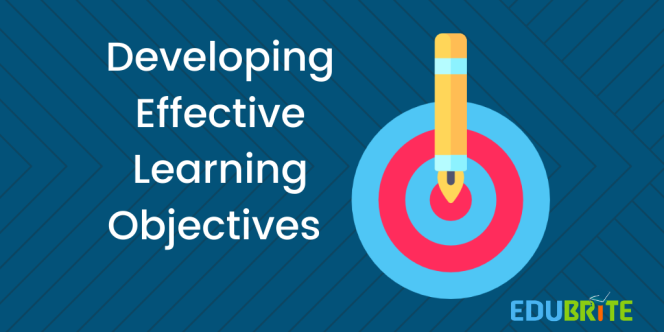Developing Effective Learning Objectives
An effective learning and development program involves setting, and then achieving, clear and relevant learning objectives. These learning objectives provide a framework that helps set the direction, focus the approach, and measure success of the knowledge or skills acquired by the learners. You can think of it as planning a trip. Once you know where you’re going, it’s much easier to decide between driving or flying to your destination, for example. Plus, it’s pretty easy to measure whether or not you’ve been successful.
So what exactly are learning objectives and what makes them effective?

What is a learning objective?
A learning objective is a clearly stated and measurable outcome that is expected of the learner by the end of the course. In other words: What will the learner be able to do as a result of this course?
For example:
By the end of this course, learners will be able to successfully identify 5 situations that need to be escalated based on our updated criteria.
Learning objectives should:
- Focus on observable and measurable skills or knowledge;
- Set expectations for trainers and participants;
- Be concise and focused; and
- Clearly define the intended outcomes upon finishing the course.
Why are learning objectives important?
Learning objectives help trainers create relevant training programs for learners. Because they outline the intended outcomes, objectives guide a focused approach that meets the needs of participants each step of the way.
For learners, learning objectives are important because they:
- Provide clear direction and purpose for students’ learning efforts. This explains what the course is about and puts you on the same page about what you are both aiming to achieve.
- Help learners measure their progress. As the course progresses, learners will know whether or not they have mastered the content.
For trainers, learning objectives are important because they:
- Guide in developing training content. Learning objectives serve as a guiding hand in creating the course. They inform the approach and what to focus on that’s relevant to the learners’ needs.
- Manage your assessment strategies and performance indicators. Because learning objectives give a clear view of outcomes, you will be able to develop clear measures for assessment and track the learners’ progression in a well-defined manner.
- Help you manage resources better. Learning objectives help you focus on what’s most important for your learners. By cutting out content that doesn’t align directly with your objectives, they allow you to save time, development costs and other resources.
What’s the difference between learning objectives and learning goals?
You may have encountered both but there’s a clear delineation between the two:
Learning goals describe the overall result you intend for the learners, though they may not necessarily be measurable and demonstrable.
Learning objectives are clear and succinct statements describing measurable outcomes and what learners are able to do by the end of the course.
Example:
Learning Goal: Learners will learn strategies to keep our organization competitive in regards to employee recruitment.
Learning Objective: By the end of this course, learners will be able to select the correct salary formula and apply it with no errors.
Knowing the difference between the two will help in developing effective learning objectives and approaches for the training course.
In the end
Learning objectives are essential in developing and implementing a training course. Understanding what they are and knowing how to develop effective learning objectives can inform the creation of courses and help you meet your training goals. The right objectives lead to a relevant and valuable experience for your learners.
